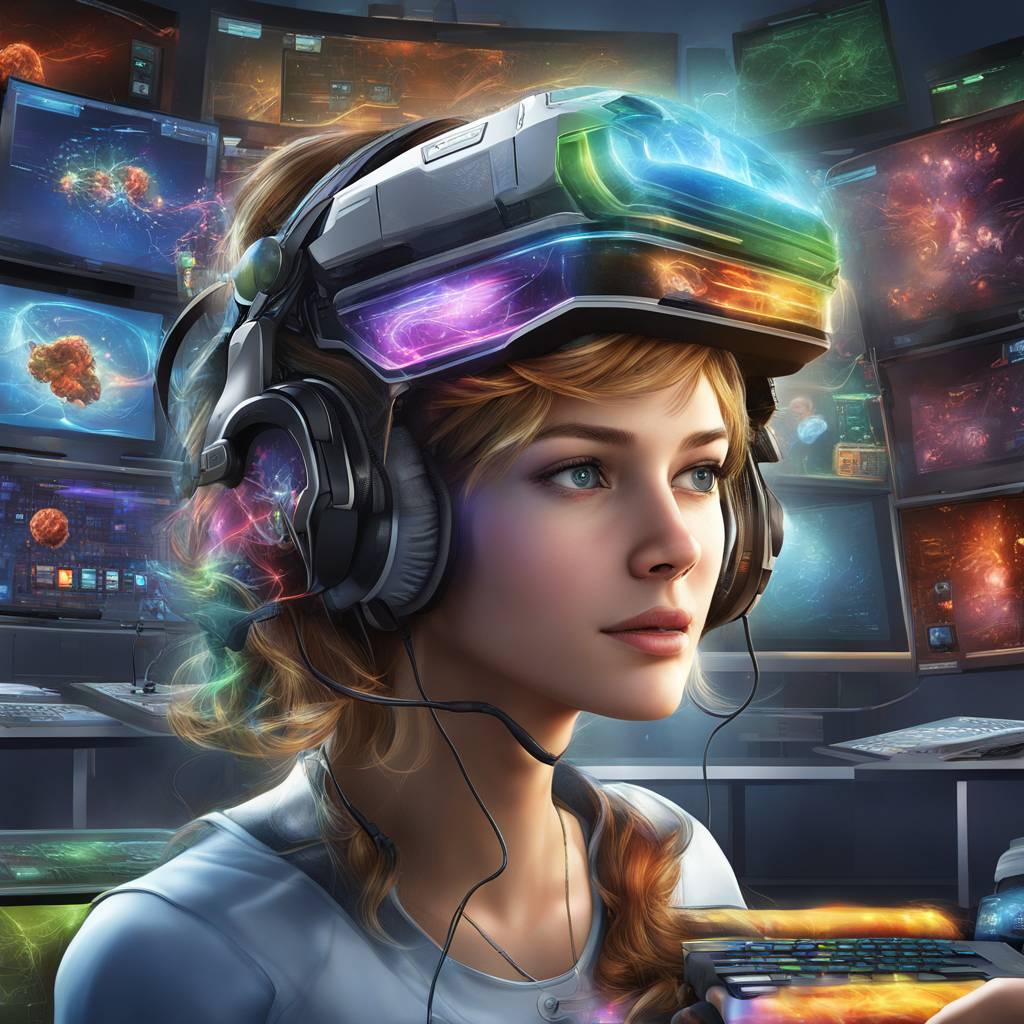Engineers at The University of Texas at Austin have developed a brain-computer interface that allows users to play a racing game using only their brain to navigate complex turns. This technology is aimed at improving the lives of people with motor disabilities. Unlike traditional brain-computer interfaces, which require extensive calibration for each user, this new solution incorporates machine learning capabilities to self-calibrate through repetition, making it a one-size-fits-all solution. This advancement could streamline the calibration process in clinical settings and enable multiple patients to use the device without needing individual tuning.
The research on the calibration-free brain-computer interface, led by José del R. Millán and his team, was published in PNAS Nexus. This innovative technology involves users wearing a cap with electrodes connected to a computer, which gathers data by measuring electrical signals from the brain. The decoder interprets this information and translates it into game actions, such as navigating a car in a racing game or balancing a digital bar. By developing a decoder for a simpler task like the bar game, the researchers were able to create a base that avoids the long calibration process and allows for simultaneous training on more complex tasks like the car racing game.
Millán’s work on brain-computer interfaces aims to help users improve their neural plasticity, or the brain’s ability to change and reorganize over time. By using brain-computer interfaces to control devices and tasks, the researchers hope to make everyday activities easier for individuals with motor disabilities. The success of the decoder in translating brain waves into commands for the bar game paved the way for future innovations in brain-computer interface technology. With a focus on translating their research to clinical applications, the team plans to test this technology on individuals with motor impairments in the future.
In addition to the racing game, Millán and his team are also working on a brain-controlled wheelchair and rehabilitation robots for the hand and arm. These applications of the brain-computer interface technology were demonstrated at the South by Southwest Conference and Festivals, showcasing the potential impact of this technology on improving the lives of individuals with disabilities. The researchers emphasize their commitment to using this technology to help people in their everyday lives, and they continue to explore new avenues for innovation and advancement in the field of brain-computer interfaces for clinical settings.
The foundational work on the calibration-free brain-computer interface sets the stage for future advancements in the field. With a focus on both improving technology usability and translating the research to the clinical realm, the team aims to make a stronger impact on individuals with disabilities. By creating a technology that is easier to use and more accessible, the researchers hope to expand the reach of brain-computer interfaces to larger groups in clinical settings. As they continue to develop and test this technology, the researchers are dedicated to leveraging the power of brain-computer interfaces to enhance the lives of individuals with motor disabilities and make a positive difference in society.




